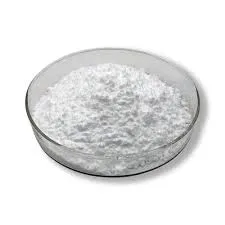
ਜੁਲਾਈ . 27, 2024 11:02 Back to list
Exploring the different grades and properties of HPMC for various applications in industry
Understanding the Grades of HPMC Implications for Pharmaceutical and Food Industries
Hydroxypropyl Methylcellulose (HPMC) is a versatile cellulose ether widely utilized in various industries, notably in pharmaceuticals and food processing. As a non-ionic polymer derived from cellulose, HPMC functions as a thickening agent, a stabilizer, and a film-forming agent, making it indispensable for many applications. Understanding the different grades of HPMC is crucial for formulators in tailoring products to meet specific needs, ensuring effectiveness, stability, and safety.
The classification of HPMC grades is primarily based on the degree of substitution, which influences its solubility, viscosity, and functional properties. The most common grades are differentiated by their hydroxypropyl and methyl content, which affects their performance in various applications. For instance, pharmaceutical-grade HPMC has stringent purity standards and is rigorously tested for contaminants, making it suitable for drug formulations, including tablets, capsules, and topical applications.
Understanding the Grades of HPMC Implications for Pharmaceutical and Food Industries
Another important application of HPMC is in the food industry, where it serves as a food additive. For food applications, HPMC is categorized based on characteristics like gel strength, heat stability, and texture-modifying properties. Different grades are employed to enhance the texture of sauces, dressings, and baked goods, providing desirable mouthfeel and consistency. In gluten-free products, HPMC can mimic the binding properties of gluten, improving dough structure and product quality.
grades of hpmc

Moreover, HPMC grades also play a vital role in cosmetic formulations, where the consistency and stability of creams and lotions are paramount. The ability of HPMC to form a film on the skin enhances product performance, providing a smooth application and enhancing moisture retention. Different grades contribute to the rheological properties of cosmetic products, enabling formulators to achieve the desired viscosity and texture.
The selection of the appropriate HPMC grade involves a comprehensive understanding of its functional properties. For formulators, it is critical to refer to technical data sheets and conduct compatibility studies with other excipients or ingredients in the formulation. Additionally, factors such as the targeted release mechanism, stability under various environmental conditions, and overall consumer acceptance must be taken into account.
The evolving global market demands continuous innovation in HPMC applications. As researchers explore new grades and formulations, the potential for HPMC in emerging fields, such as biopharmaceuticals and personalized nutrition, becomes increasingly promising. Understanding the distinct properties of various HPMC grades and their appropriate applications will empower manufacturers to deliver superior products that meet consumer expectations and regulatory requirements.
In conclusion, the grades of HPMC significantly influence its application across different industries. With its multifaceted properties, HPMC remains a crucial ingredient in pharmaceutical, food, and cosmetic formulations. By understanding the nuances of HPMC grades, formulators can optimize product development, enhance consumer satisfaction, and contribute to advancements in various fields. As the demand for quality products continues to grow, the importance of selecting the right HPMC grade cannot be overstated.
-
Unlocking the Benefits of HPMC Products: A Gateway to Versatile Applications
NewsAug.07,2025
-
Unleashing the Potential of HPMC Ashland: A Comprehensive Look
NewsAug.07,2025
-
Tile Bonding Cellulose: The Key to Superior Adhesion and Durability
NewsAug.07,2025
-
Hydroxypropyl Methylcellulose Powder: The Versatile Component in Modern Pharmaceuticals
NewsAug.07,2025
-
Hydroxyethyl Cellulose: The Versatile Solution for Various Industries
NewsAug.07,2025
-
Hydroxyethyl Cellulose (HEC): The Versatile Polymer for Various Applications
NewsAug.07,2025







